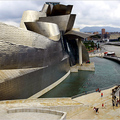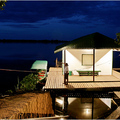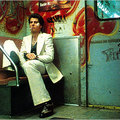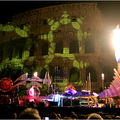
Place Stanislas, built in the 18th century to link Nancy’s old and new towns, has been named a Unesco World Heritage Site.
IN 1738 — the year that Louis XV's father-in-law, Stanislas Leszczynski, was given the Duchy of Lorraine — the 240-mile journey to that corner of eastern France from Paris would have taken days. Since June, a fast new TGV train service has cut the time to just 90 minutes. Almost hourly morning departures and evening returns from Gare de l'Est in Paris make Nancy, the artistic and intellectual capital of Lorraine, a great day trip — especially if you like the sinuous, sexy belle époque art form known as Art Nouveau.
Of course, there was nothing nouveau about Stanislas. Making the most of what was his consolation prize for losing the kingdom of Poland, he set about turning Nancy into a glorious rococo showpiece. In an inspired act of urban planning he created a monumental central square to join Nancy's medieval quarter to its 16th-century “new town.” This is a convenient place to start an exploration of Nancy. A short walk from the railroad station, Place Stanislas is a gigantic rectangle, surrounded by gloriously ornamented classical buildings, gilded wrought-iron gates and extravagant fountains. The square and its surroundings, completely restored in 2005, have been named a Unesco World Heritage Site.
But you can find Art Nouveau on the Place Stan at Le Musée des Beaux-Arts de Nancy (3, place Stanislas, 33-3-8385-3072; www.nancy.fr). The light and airy upper floors are devoted to a sampling of artists of the 19th and 20th century — Dufy, Manet, Matisse, Modigliani, Monet, Picasso — as well as one of Rubens's earliest works (“The Transfiguration,” 1605) and one of Caravaggio's last (“The Annunciation,” 1609).
But anyone serious about Art Nouveau, especially its pioneering School of Nancy, will find equivalent treasure in the basement — a collection of some 300 pieces of Daum glass from 1891 to the turn of the 21st century. You can see what Daum is selling now (like glass replicas of horses from different Chinese dynasties) at the company's boutique-museum at 14, place Stanislas (33-3-8332-2165; www.daum.fr).
The Daum company was active in the School of Nancy, an association of artists, artisans and manufacturers established in 1901 to promote the new international decorative style known as Art Nouveau. The school's stated goals: “art in everything” and “art for everyone.” Like Gustav Klimt in Austria, Antonio Gaudí in Barcelona and Hector Guimard in Paris, Nancy artists were experimenting with natural shapes — flowers, vines, birds, insects — and the idea of using industrial techniques and materials to create beauty.
The founder of the School of Nancy was Emile Gallé, such a master of glassmaking innovation that his New York counterpart, Louis Comfort Tiffany, traveled to Nancy to visit his factory. The fascinating Musée de l'Ecole de Nancy is dedicated to his work and that of his associates (36-38, rue du Sergent Blandan, 33-3-8340-1486; www.nancy.fr). In this appropriately Art Nouveau mansion, each room — parlor, music room, dining room, bedrooms, office — is fitted out in period furniture, stained glass and objets d'art. One highlight: Gallé's “Dawn and Dusk” bed, with an amazingly rendered, if rather bizarre, moth theme.
Not far away is the home of Louis Majorelle, a master craftsman in wood (marquetry was his forte) and prominent member of the Nancy School. You can spot the house (1, rue Louis Majorelle; 33-3-8394-3000) by its asymmetrical facade, curvy windows, writhing balconies and flower-shaped chimney pots. Tours take place on Saturdays and Sundays from May to October. Book at the Musée de l'Ecole de Nancy.
There is more to Nancy than Art Nouveau. The thriving city of about 400,000 is also known for quiche Lorraine. Try the egg, ham and cheese tart at Nathalie Lalonde (3, rue Stanislas, 33-3-8351-6708; www.nathalie-lalonde.com). For macaroons, the almond cookies said to have been invented in Nancy by Benedictine nuns, go to the Maison des Soeurs Macarons (21, rue Gambetta, 33-3-8332-2425; www.macaron-de-nancy.com). The sisters sold them to support themselves during the French Revolution. Also try their bergamotes, hard candies that taste of Earl Grey tea.
There is serious food in Nancy, too, like at the minuscule Le V'Four (10, rue St.-Michel, 33-3-8332-4948), whose fresh-from-the-market menus are 25 and 37 euros ($35 and $52 at $1.40 to the euro). But wine is another matter. Lorraine's offerings are not up to the quality of the Alsace region next door.
Still, Alsace and Lorraine have something of a shared history — at times annexed to Germany, then reverting to France. They have been on military front lines from the Burgundy Wars of the 15th century to World Wars I and II. Amazingly, Nancy has survived all this conflict relatively unscathed. Its medieval old town features the 13th-century Craffe Gate, the 15th-century Cordelier Church and remnants of an early 16th-century palace. The delightfully eclectic Musée Lorrain (64, Grande Rue, 33-3-8332-1874; www.nancy.fr) includes medieval church sculpture, a display of historic French porcelain, and important works from two 17th-century local artists: Georges de La Tour, the master of indirect lighting, and Jacques Callot, one of the most socially perceptive engravers in art history.
But for art lovers, collectors and design connoisseurs, Nancy means Nouveau. You can still find museum-quality Art Nouveau objects in Nancy, but they are pricey.
“The good pieces are getting more expensive and more difficult to find,” said Denis Ruga, whose shop Antiquités (13, rue Stanislas, 33-3-8335-2079) specializes in Art Nouveau. On display were two sets of nesting tables. One, featuring floral marquetry, was signed by Majorelle (4,100 euros); the second, with a highly intricate bird-and-branch design, was inlaid with Gallé's name (5,800 euros). The best work in the gallery, said Mr. Ruga, was an early rose-tinted lamp signed by Gallé, priced at 20,000 euros. (It has since been sold.) For about that price at Antiquités Collignon (81, Grande Rue, 33-3-8332-8273) you could have bought an original (but unsigned) finely detailed five-piece Art Nouveau love-seat and chair set.
For a less expensive souvenir, try Aujourd'hui 1900 (29, rue du Sergent Blandan, 33-3-8390-7368; www.laflor1900.fr), a cheerful shop across the street from the Musée de l'Ecole de Nancy. What at first appear to be examples of Daum and Gallé lamps and vases are in fact respectful reinterpretations of them, bearing the Laflor trademark. “It's a combination of Lorraine and la fleur,” Martine Jacques explained, using the French word for flower. Her uncle Francis Pérignon started the enterprise three years ago after retiring from an electrical business. Since his mother had worked for Daum, Mr. Pérignon had grown up with the School of Nancy aesthetic.
Like the Nancy artists before him, Mr. Pérignon designs each vase or lamp and then sends off the plans — for multiple layers of glass, say, or specific acid etching — to artisans often working at home. Each of the items, which range from 20 to 700 euros, comes with a certificate affirming that the hand-blown glass follows in the tradition of Lorraine's master glassmakers at the turn of the 20th century.
After a nonstop Nouveau day in Nancy, the most appropriate place to end your excursion is L'Excelsior, a century-old brasserie (50, rue Henri-Poincaré, 33-3-8335-2457; brasserie-excelsior.com). It's a complete 1911 period piece: creamy molded ceilings, russet-colored stained-glass windows, polished brass chandeliers — all with a fern or flower motif. It has regional-contemporary food, oysters in season, amazing desserts, a Majorelle piano, and it's just a block from the railroad station.






